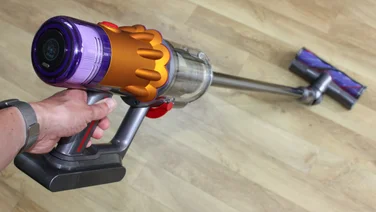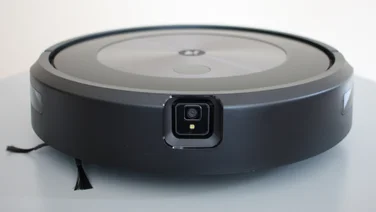To help us provide you with free impartial advice, we may earn a commission if you buy through links on our site. Learn more

A vacuum cleaner can be an expensive purchase but one that will hopefully stay in service in your home for many years to come.
At Expert Reviews, we put every vacuum cleaner we review through a range of practical tests, which helps us compare the performance of each new model to those we’ve reviewed previously. We then add the cream of the crop to our best vacuum cleaner roundup. Below we’ll take you through a step-by-step guide detailing how we test the various aspects of vacuum cleaner performance.
How we test vacuum cleaner suction
First of all, the power of a vacuum’s suction is tested using a vacuum gauge. This analogue device is attached to a convenient inlet on the vacuum cleaner – usually an extension hose on an upright or directly onto the vacuum cleaner or extension wand of a cordless stick. It’s then taped in place to create an air-tight seal.
We record the suction on all of a vacuum’s settings, so we can see how powerful the suction is when it’s on boost, during normal operation and on battery-saving efficiency settings (if it has them).
READ NEXT: Best Shark vacuums
How we test vacuum cleaning ability
To test how effective vacuum cleaners are at cleaning, we put them through a series of rigorous tests. This involves cleaning spillages of Cheerios, flour and pet hair. We test on both carpet and hard floor to get an idea of each cleaner’s performance on both surfaces.To ensure we test every vacuum cleaner in the same way, we use the same volume of material in every test: 26g of Cheerios, 50g of flour and 5g of pet hair. By weighing the collection bin before and after the test, we can see exactly how much each cleaner has managed to pick up.
These are tough tests. Cheerios are large particles that can get pushed ahead of a vacuum if it doesn’t have enough clearance and can easily cause blockages in pipes. Flour is notorious for getting caught in carpet, so a vacuum cleaner that can lift most of this up on a single pass is a device to be reckoned with. Pet hair is also problematic, with its tendency to stick to everything and gather both on brush rollers and in awkward pipe-blocking clumps.
How we test vacuum cleaner battery life
If the vacuum cleaner is cordless, we test the battery life to check that it isn’t going to cut out on you before your cleaning jobs are completed. The battery is charged to 100%, then switched on with the floor head roller engaged on short-pile carpet. It’s then left to run until the battery is exhausted.
We run this test on the vacuum’s highest suction and again on its most efficient setting. This lets us see the full range of the battery’s life.
READ NEXT: Best cordless vacuum cleaners
How we test vacuum cleaner usability
We also test vacuum cleaners as they’re intended to be used, by pushing them around a house and doing a thorough clean. This is important because it shows us how easy the vacuum is to use in real-world conditions.

During this time, we test the controls to see how intuitive they are, frequently switching between settings. We test all the different functions so we know how the vacuum operates across its various modes, put any included attachments through their paces, and see how easy the vacuum is to manoeuvre around the house.
Refining our tests
One of the benefits of our testing is that it’s remained largely static for a long time, which means that the very latest products can be directly compared to vacuum cleaners that we tested years ago.
However, we’re always looking for ways to improve our testing, by adding new tests and removing redundant or out-of-date tests as and when needed. Our pet hair test is a good example of this. It was introduced in 2023 to add an extra dimension to our suite of cleaning tests.






